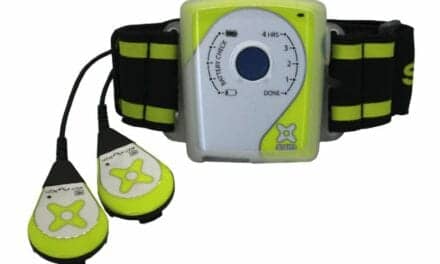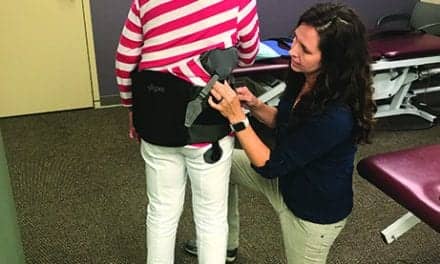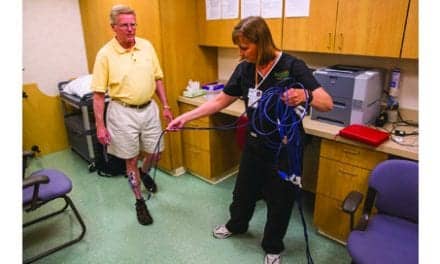Not wearing a sling – and engaging in early motion of the shoulder after surgery – leads to faster recovery and better 6-month outcomes, suggests a study published recently in The Journal of Bone & Joint Surgery, published in the Lippincott portfolio in partnership with Wolters Kluwer.
For patients who had small- to medium-sized tears repaired arthroscopically, not wearing a sling in the first few weeks after rotator cuff surgery led to less pain and better shoulder function at 6 months, concludes the randomized trial by Alexandre Lädermann, MD, of University Hospitals of Geneva, Switzerland, and colleagues. The findings are consistent with the recent trend toward early-motion rehabilitation programs after rotator cuff surgery, rather than several weeks of immobilization, according to a media release from Wolters Kluwer Health: Lippincott Williams and Wilkins.
The study included 80 patients undergoing arthroscopic surgery to repair a small or medium tear (less than three centimeters) of the rotator cuff at one Swiss hospital. One group of 40 patients wore a sling for the first 4 weeks after surgery, with no active shoulder motion permitted. This period of postoperative immobilization is commonly recommended.
The other group of 40 patients did not wear a sling after rotator cuff repair. Both groups performed passive mobilization for 4 weeks after surgery, followed by progressive active mobilization and exercises.
Ten days after surgery, pain scores were similar between groups: about 5 on a 0-to-10 visual scale. One-and-a-half months after surgery, patients who did not wear a sling had increased shoulder motion, including external (outward) rotation and active elevation. Both groups showed continued improvement at 3 months, but shoulder elevation remained greater in the no-sling group. By 6 months, measures of shoulder movement were similar between groups, the release explains.
Ultrasound examinations performed at 6 months showed no significant differences between the sling and no-sling groups, including the integrity of the rotator cuff repair. Also at 6 months, the American Shoulder and Elbow Surgeons (ASES) score was unaffected by whether or not the patient wore a sling.
However, patients in the no-sling group rated their shoulder at about 86% of normal on the Single Assessment Numeric Evaluation (SANE) scale, compared to 79% in the sling group. Six-month pain scores were also lower for patients who didn’t wear a sling: 0.8 versus 1.5 out of 10. Wearing a sling was significantly associated with higher pain scores, even after adjustment for other factors.
The results show that the no-sling approach with early movement leads to faster recovery of shoulder motion, less pain, and better overall patient ratings throughout the 6 months after surgery, the release continues.
“Postoperative mobilization with a sling may therefore not be required for patients treated for a small or medium tear,” Lädermann and colleagues conclude, in the release. They note that their findings corroborate the results of other recent studies reporting the benefits of early-motion rehabilitation protocols.
[Source(s): Wolters Kluwer Health: Lippincott Williams and Wilkins, Newswise]





